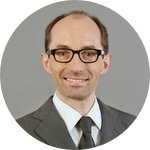About
I saw my first solar eclipse, a partial one, in 1994 from Northern Italy. While reading an article about that eclipse in an astronomy magazine, I became aware of the fact that a total solar eclipse would cross Europe on August 11th, 1999. I was on a hilltop in beautiful Alsace that day and despite being clouded out, the arrival of the lunar shadow was so impressive and so real that I was hooked! I told myself that I would go wherever next total solar eclipse would occur. I was a university student with little money but I scraped up enough to go on a special budget trip to Zambia and on June 21st, 2001 I saw an incredibly beautiful total solar eclipse in clear sky. My life was changed.
I wanted more, as I was in awe of people performing eclipse computations and predicting their circumstances. I started studying and I gathered enough knowledge to be able to make precise predictions. I then computed a very long canon of solar eclipses: basically a long list of so-called Besselian elements, spanning the time interval from the year -13000 to the year +17000. For about ten years that was the longest available eclipse canon. While performing those computations, I became curious about experimentally checking the accuracy of the predicted solar eclipse circumstances, especially the accuracy of the time of second and third contact. To pursue that goal, I came up with the idea of using the flash spectrum (I later discovered that others had had similar ideas in the past). And I also learnt that similar techniques could be applied to the estimation of the solar radius.
I am currently living in Sydney (Australia).
Joined
October 2021
